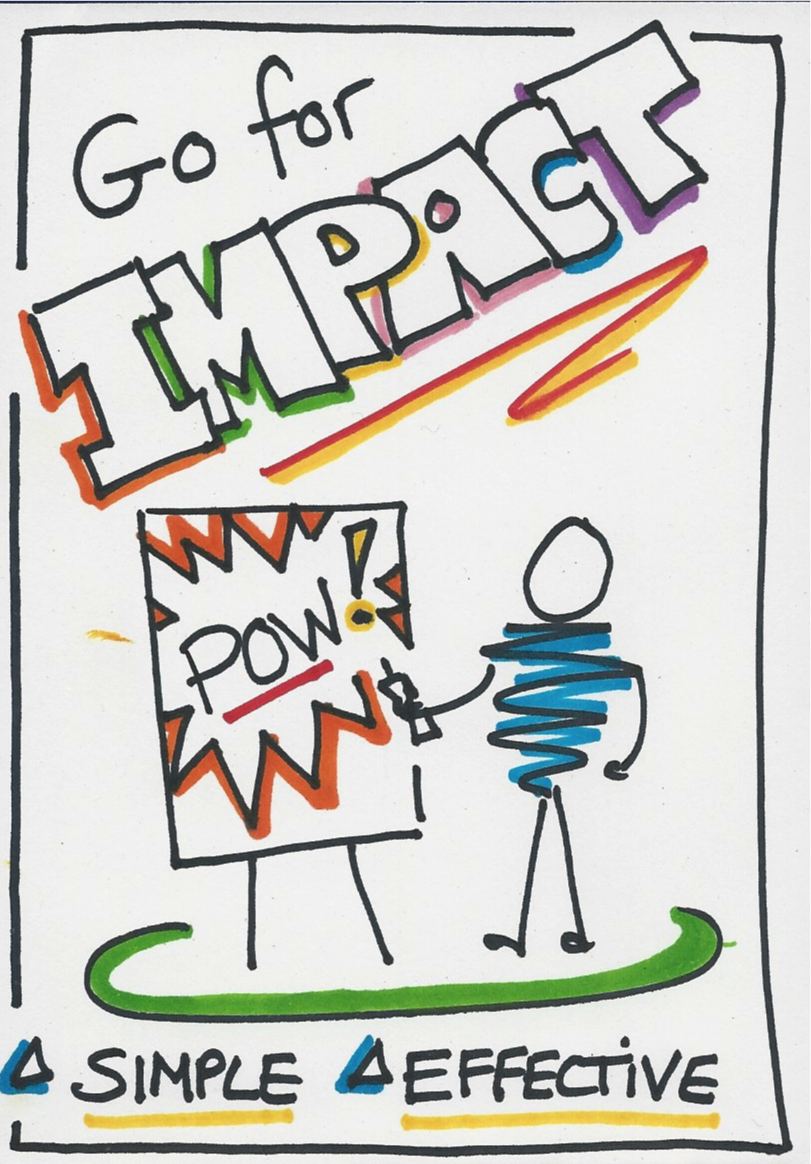Simple steps to produce great training resources

Nicole Vazquez continues her series on getting the most out of training. Her second article can be found here.
 When I first started training (scarily, over 20 years ago), facilitators used flipcharts and overhead projectors (remember those?) and the most innovative thing that happened was a pub quiz at the end of the session.
When I first started training (scarily, over 20 years ago), facilitators used flipcharts and overhead projectors (remember those?) and the most innovative thing that happened was a pub quiz at the end of the session.
In today’s world we have access to all kinds of technology and our learners have become more sophisticated, demanding and discerning; they expect slick presentations and resources to support the training. However, clever use of PowerPoint and e-learning will never be a substitute for well thought out, structured and inclusive training.
Below are a few simple steps to help you produce effective training resources no matter what medium you decide to use:
- Be sure you know where you’re heading. Think of the training as a journey; work out where your destination is by having clear outcomes in mind. Any resources you then produce become the appropriate vehicle to get you there.
- Be realistic about the resources you have available. Don’t feel that you have to have lots of bells and whistles to engage the group in order to be effective. There is no point producing amazing digital learning if you don’t have the computers available for your learners to access it or if you feel uncomfortable using it. Often simple interactive exercises, delivered by a passionate facilitator, with the learning captured on a flipchart can be the most powerful.
- Choose your medium wisely. Never assume that because you like PowerPoint, quizwords or role-play, etc. that your learners will too. When designing resources, consider your learners’ literacy levels, learning styles and comfort zones. We’ve all experienced near death by PowerPoint at some stage or other; try to vary your materials to engage all styles and learning preferences.
- Get arts and crafty! Spend time checking the visual and physical appeal of any materials you use. Add colour, imagery and interest to your resources. There are loads of simple tricks you can use to liven up your flipcharts and hand-outs. Use coloured paper and pens. Learn to draw simple images (visual metaphors work wonderfully) and if your IT skills are not great, ask for help from a colleague (or a teenager) to give your work the edge, but remember I’m NOT suggesting style over substance.
- Make it relevant and realistic. Ensure that the language and situations used in any scenarios, case studies etc. realistically reflect your learners’ world. Recently we produced some training videos with a client covering conflict management. We used reports of recent incidents along with concerns from staff to write scripts that reflected their working day and the challenges they face. We filmed in their workplace, ensuring we had management, staff and union reps available to do the realism check for us. It was well worth it as small errors and inaccuracies can be distracting, dent the credibility of the material and be a barrier to learning.
- Aim for multipurpose value! I rarely add an exercise or resource to my training ‘tool box’ unless I can find ways to make it adaptable for at least three different uses. For example, a jigsaw game, which can be used to explore how we unconsciously follow set patterns of behaviour, can also be used as a problem solving exercise as well as a game to test communication skills.
- Make it challenging. Whatever you produce, ensure that you stretch the learners. If I had a pet hate it would be training exercises that don’t challenge learners. Don’t throw people out of their comfort zone completely, but make your material sufficiently challenging that learners need to put in some effort to achieve the desired result. Remember learning generally happens when we are asked to step out of our ‘zone’ just a little.
- Tell a tale! We learn more from those funny anecdotal stories or prophetic tales than we are ever likely to learn from pie charts or tables. Develop your bank of case studies and examples. I keep a book of interesting anecdotes and use the stories to illustrate key learning points.
- Don’t stop there… I always write notes at the end of training workshops to remind myself of any new uses or learning (that I can think of for a resource); this way you can expand your repertoire without having to create all new materials. On the other hand, don’t forget to refresh your resources on a regular basis. If what you use is memorable, they will remember!
Advance your career in health and safety
Browse hundreds of jobs in health and safety, brought to you by SHP4Jobs, and take your next steps as a consultant, health and safety officer, environmental advisor, health and wellbeing manager and more.
Or, if you’re a recruiter, post jobs and use our database to discover the most qualified candidates.
Simple steps to produce great training resources
Nicole Vazquez continues her series on getting the most out of training. Her second article can be found here. When
Nicole Vazquez
SHP - Health and Safety News, Legislation, PPE, CPD and Resources Related Topics
Inclusivity in PPE: The manufacturer’s perspective
Future-proofing safety: Five trends shaping the PPE landscape of tomorrow
Arco backs SHP campaign for PPE inclusivity

